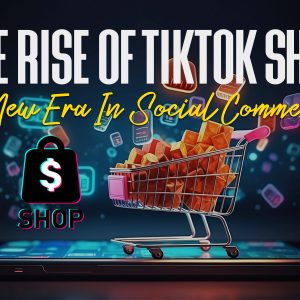
In the ever-evolving landscape of marketing, staying ahead of the curve requires a deep understanding of the language. Jargon, acronyms, and buzzwords abound, but fluency in these terms isn’t just about sounding impressive; it’s about wielding the right tools to build, position, and communicate your brand effectively.
Today, we’ll delve into five essential marketing terms that every marketer, from seasoned veterans to ambitious newcomers, should have engraved on their mental tablets. These terms are the building blocks of successful brand strategies, and mastering them will empower you to navigate the marketing maze with confidence.
1. Brand Positioning: Your North Star in a Crowded Market
Imagine a vast ocean, teeming with vessels vying for attention. Your brand is one of those ships, and brand positioning is your compass, guiding you towards a destination amidst the competitive waves. It’s the answer to the crucial question: “Who are we, and what makes us unique in the eyes of our target audience?”
Brand positioning isn’t just about features or benefits; it’s about carving out a distinct niche in the consumer’s mind. Think of Nike’s “Just do it” or Apple’s “Think different.” These concise yet powerful statements capture the essence of their brands, resonating deeply with their respective audiences.
Effective positioning requires a thorough understanding of your target market, their needs and desires, and your competitors’ offerings. It’s about identifying a gap in the market, a space where your brand can stand out and offer something truly valuable.
2. Brand Identity: The Face You Show the World
Now that you’ve charted your course, it’s time to build your ship. Brand identity is the visual and emotional representation of your brand, the tangible manifestation of your positioning. It’s the logo, the colors, the fonts, the tone of voice, the overall personality that makes your brand instantly recognizable and memorable.
Think of Coca-Cola’s iconic red and white script, or Starbucks’ siren logo. These elements are more than just aesthetics; they evoke emotions, feelings, and associations that connect with consumers on a deeper level.
Building a strong brand identity requires consistency and coherence. Every touchpoint, from your website to your packaging to your social media presence, should reflect the core values and personality you’ve established.
3. Brand Storytelling: Weaving a Narrative that Captivates
In a world saturated with marketing messages, simply stating your features and benefits won’t cut it. You need to weave a compelling narrative, a story that resonates with your audience and draws them into your brand’s world.
Brand storytelling is about going beyond the product and connecting with consumers on an emotional level. It’s about sharing your brand’s values, its purpose, its journey. It’s about creating characters, heroes, and villains that your audience can relate to and invest in.
Think of Dove’s “Real Beauty” campaign, or Patagonia’s commitment to environmental activism. These stories go beyond selling products; they build trust, loyalty, and a sense of community around the brand.
4. Customer Experience: Shaping Every Interaction into Delight
The customer experience is no longer just about the transaction; it’s about the entire journey a customer takes with your brand, from the initial discovery to post-purchase interactions. Every touchpoint, every interaction, shapes the customer’s perception of your brand.
Creating a positive customer experience requires a focus on empathy, understanding, and exceeding expectations. It’s about anticipating customer needs, resolving issues promptly, and going the extra mile to make them feel valued and appreciated.
Think of Zappos’ legendary customer service or Amazon’s seamless online shopping experience. These brands prioritize customer satisfaction at every step, building loyalty and advocacy that translates into long-term success.
5. Brand Advocacy: Turning Customers into Champions
Imagine having a dedicated army of loyal supporters, spreading the word about your brand and championing its values. That’s the power of brand advocacy. It’s about turning satisfied customers into passionate advocates who sing your praises and recommend your brand to others.
Earning brand advocacy requires building trust, fostering a sense of community, and providing customers with opportunities to engage with your brand beyond the purchase. Social media, loyalty programs, and interactive campaigns can all be powerful tools to cultivate brand advocates.
Think of GoPro’s user-generated content campaigns or Nike’s grassroots initiatives. These brands empower their customers to become co-creators and storytellers, amplifying their reach and building unwavering loyalty.










